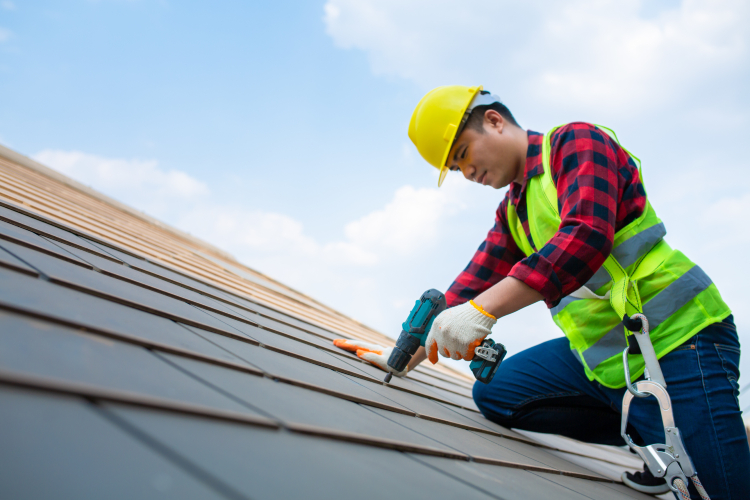Exactly How to Assess Various Roofing Alternatives for Your Building Needs
Reviewing roof choices for your building needs a detailed strategy that considers various elements such as the intended usage of the structure, local environment conditions, and material attributes - Sylvania Roofing Contractor. It is vital to consider the benefits and drawbacks of different roof covering types, from asphalt roof shingles to steel and clay floor tiles, while also factoring in first expenses and lasting upkeep.
Evaluating Your Structure's Demands
To effectively assess roofing choices, start by thoroughly examining your building's demands. Begin by considering the structure's meant use, as different frameworks might necessitate varying roof covering requirements. Residential roofing systems commonly prioritize visual appeals and insulation, while business structures may concentrate on longevity and load-bearing ability.
Next, review the neighborhood environment problems that will affect roof covering performance. Aspects such as temperature level variations, rainfall degrees, and wind patterns can influence product selection and design. A roof that masters a pleasant climate may not carry out as well in areas vulnerable to heavy snowfall or severe warm.
Additionally, assess the architectural honesty of your building. Make sure that the existing structure can sustain the chosen roof materials, particularly if taking into consideration larger options. It is additionally essential to examine any local building regulations or policies that may dictate certain needs for roof covering systems.

Contrasting Roof Covering Products
Once a detailed assessment of your building's needs has been completed, the following action involves contrasting different roofing products. Each material offers distinct advantages and negative aspects, making it vital to align your option with your details demands and situations.
Asphalt tiles are widely recognized for their price and simplicity of installment, making them a popular choice for property structures. On the various other hand, steel roof covering, known for its durability and longevity, can withstand extreme weather but may include a greater preliminary financial investment.
Clay and concrete floor tiles give outstanding thermal insulation and aesthetic appeal, especially for Mediterranean-style style, yet they call for a more durable architectural support because of their weight. Timber drinks offer an all-natural look and excellent insulation buildings however might demand extra upkeep and are at risk to fire hazards.
Assessing Cost and Budget
Evaluating your roof choices requires a cautious examination of expense and budget factors to consider. The general budget for a roofing task makes up several variables, consisting of product costs, labor expenditures, maintenance, and prospective long-term cost savings. It is important to establish a clear budget plan before exploring details roof materials, as this will lead the decision-making procedure and aid you prevent overspending.
Begin by getting quotes from multiple specialists to understand labor prices in your region. Make sure that these quotes consist of all necessary solutions, such as removal of the old roof, installation, and any type of extra features, like insulation or air flow renovations - Sylvania Roofing Contractor. Next, assess the cost of various roofing products, taking into consideration both initial installation expenses and anticipated life expectancy

Understanding Power Performance
Power efficiency plays a crucial duty in the option of roofing materials and systems, considerably impacting both power intake and total convenience within a building. An appropriate roofing can enhance thermal efficiency, minimizing the demand for heating and cooling systems, which in turn decreases power costs and decreases environmental influence.
When reviewing roofing choices, consider products that mirror instead than absorb heat. Light or reflective roofing products can substantially decrease roof surface temperature levels, leading to reduced energy use throughout hot months. Additionally, appropriate insulation and air flow are important to optimize the power performance of the entire roof. Insulation protects against warm transfer, while ventilation mitigates heat build-up in the attic room area.
One more vital factor is the roofing system's durability and maintenance needs. Long lasting products that call for much less constant substitute contribute to lasting energy savings. The power effectiveness of a roofing system see this can also be examined through its compliance with established sustainability scores such as ENERGY STAR or LEED.
Considering Visual Appeal
A roofing's aesthetic allure significantly influences the total look of a building, enhancing its building style and boosting visual charm. Perrysburg check here Roofer. When reviewing roof covering alternatives, it is necessary to think about how the chosen product, shade, and layout will certainly balance with the existing structure and area. A well-designed roofing system can raise even the simplest of structures, changing them into visual prime focus
Different roof covering materials offer numerous visual top qualities. For example, conventional shingles may stimulate a timeless beauty, while metal roofing can give a modern, sleek appearance. Additionally, the shade of the roof covering product plays an important function; lighter tones can make a structure show up even more spacious, while darker tones might develop a cozier setting.
Furthermore, architectural aspects, such as dormers and eaves, can improve the roof's visual effect. It is suggested to speak with professional developers or designers to make certain the selected roof covering alternative straightens with the overall style intent. Ultimately, read this article a roof must not only offer useful advantages however additionally contribute favorably to the building's aesthetic, reflecting the owner's taste and the character of the surrounding environment.
Final thought
